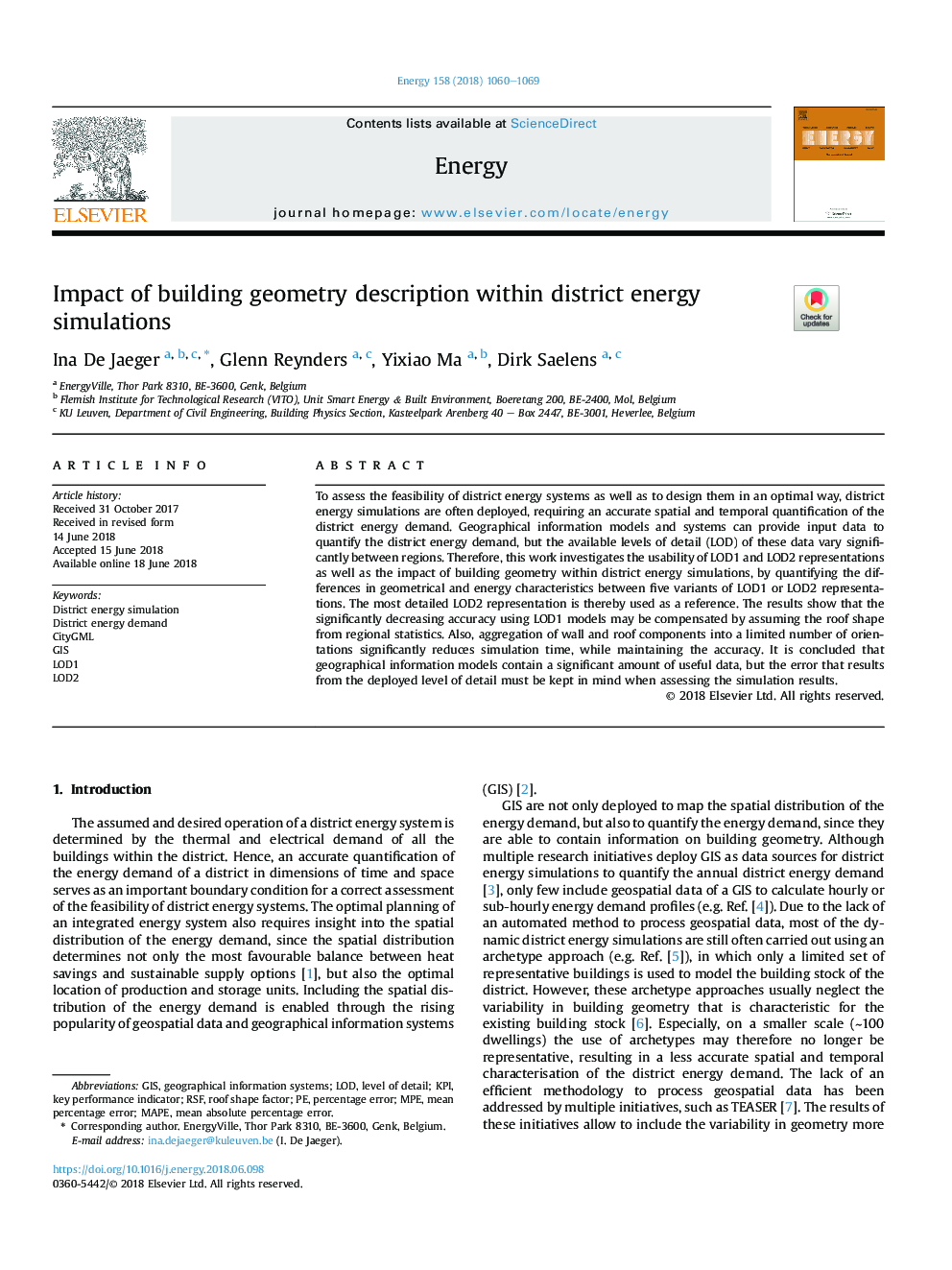| Article ID | Journal | Published Year | Pages | File Type |
|---|---|---|---|---|
| 8071239 | Energy | 2018 | 10 Pages |
Abstract
To assess the feasibility of district energy systems as well as to design them in an optimal way, district energy simulations are often deployed, requiring an accurate spatial and temporal quantification of the district energy demand. Geographical information models and systems can provide input data to quantify the district energy demand, but the available levels of detail (LOD) of these data vary significantly between regions. Therefore, this work investigates the usability of LOD1 and LOD2 representations as well as the impact of building geometry within district energy simulations, by quantifying the differences in geometrical and energy characteristics between five variants of LOD1 or LOD2 representations. The most detailed LOD2 representation is thereby used as a reference. The results show that the significantly decreasing accuracy using LOD1 models may be compensated by assuming the roof shape from regional statistics. Also, aggregation of wall and roof components into a limited number of orientations significantly reduces simulation time, while maintaining the accuracy. It is concluded that geographical information models contain a significant amount of useful data, but the error that results from the deployed level of detail must be kept in mind when assessing the simulation results.
Related Topics
Physical Sciences and Engineering
Energy
Energy (General)
Authors
Ina De Jaeger, Glenn Reynders, Yixiao Ma, Dirk Saelens,
